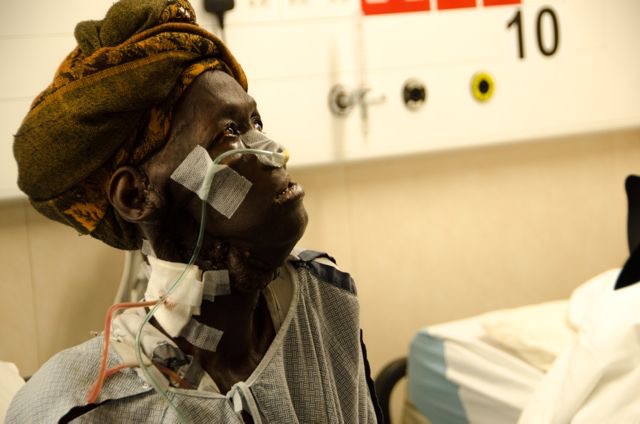
Hasanatu 8 days post-operative.
photo: © Debra Bell for Mercy Ships
In a nation with 59% illiteracy it should not be too surprising to find that Guinean society is built primarily upon symbols. So, in Guinea (as in much of Africa) symbols are a powerful medium for communication. Yet those of us from the word-saturated West are, for the most part, oblivious to this fundamental difference in our two cultures.
For example, in the culture of the Pla people of Benin to offer a guest a glass of water means much more than just good manners. If you are offered a glass of water in a Pla home, your host is wanting to communicate, "I am at peace with you." If you decline the water, (perhaps quite justifiably you're worried about possible after effects) in essence, you are saying, "I do not accept your offer of peace; I am at war with you."
As you can well imagine, uncovering deep level meaning behind routine, everyday gestures is key for our crew as we communicate and serve cross-culturally. We want our patients to feel comfortable and safe with us during their time on board.
Just the other day, I happened to be in the Maxillofacial/ENT ward while Gary was making rounds. As he stopped at Hasanatu's bed, one of the nurses mentioned to him that when she uses the privacy curtain to change Hasanatu's hospital gown, Hasanatu becomes visibly agitated.
Being naturally curious, I asked the nurse where the curtain in question was. She gestured across the room towards a full length curtain hanging from the deckhead by magnetic hooks. It was a deep red-wine color.
I turned to our Fula translator and asked him if the color red had any symbolic value in his culture. "No," he said, "I can't think of anything." I asked him to ask Hasanatu. He quickly translated my question into Fulani, but she looked confused. "She doesn't know," he replied.
Gary and I continued to troubleshoot: "Could it be that when her bed was shrouded in that long red curtain it made her feel isolated from the other patients…cut off from community, alone and vulnerable in a very strange place? Maybe that was all it was. Maybe…"
I turned back to the translator one last time, and probed a little further, "What color in this culture represents trouble or danger?" Without blinking an eye he replied, "Why, red, of course."
Good to know. Good to know.



